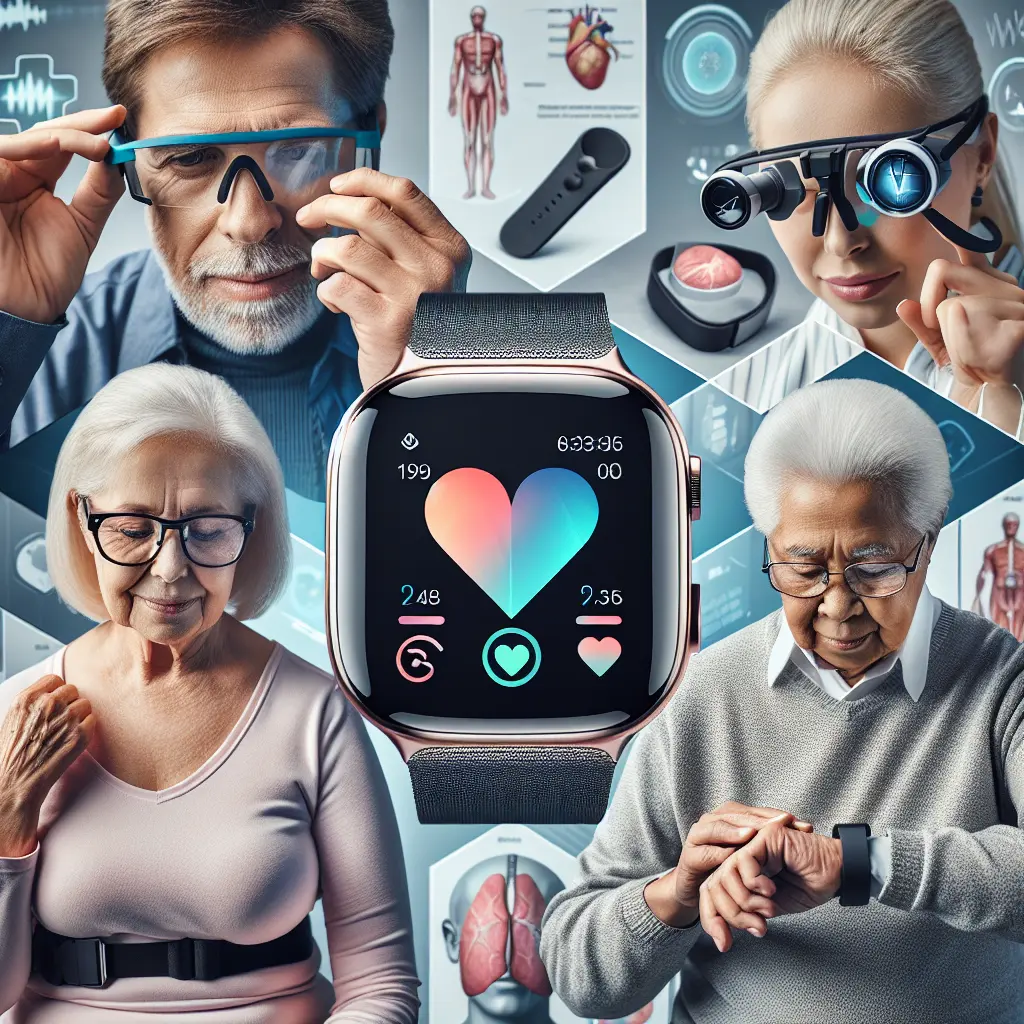
Introduction to Innovative Wearable Devices for Senior Health Monitoring
In a rapidly aging world, the need for efficient senior health monitoring has never been more pressing. Innovative wearable devices are at the forefront of this revolution, seamlessly integrating technology into seniors' lives. These cutting-edge wearable technology solutions empower the elderly to maintain an active and healthy lifestyle. By leveraging senior wellness wearables and eldercare technology solutions, families and caregivers can ensure comprehensive remote health monitoring for seniors. These health wearables not only track vital signs but also provide peace of mind through constant connectivity. The integration of wearable medical devices enhances senior care technology, ensuring that timely interventions and support are provided.
Recent Developments in Wearable Technology for Seniors
The landscape of wearable health trackers for seniors is rapidly evolving. Innovations in wearable sensors and smart health devices are transforming how we approach senior care technology. New devices now monitor vital signs like heart rate, blood pressure, and oxygen levels, providing real-time data to caregivers and healthcare providers. This constant connectivity ensures the well-being of the elderly and offers peace of mind to families.
AI-Driven Analytics and Predictive Health Monitoring
One promising development is the incorporation of AI-driven analytics in senior fitness trackers. These advancements allow for predictive health monitoring, enabling early detection of potential health issues before they become critical. AI integration in wearable medical devices can significantly reduce hospital readmissions and improve overall quality of life (source).
Market Dynamics and Growth Opportunities
The market for wearable health trackers and other senior wellness wearables is poised for substantial growth. According to market research forecasts, the wearable technology market for seniors is expected to grow significantly by 2032, driven by an increasing aging population and a preference for remote health monitoring (source). Government initiatives aimed at promoting eldercare technology further support this growth.
An interesting parallel can be drawn from industries such as drip chambers and surgical sutures markets, which are also witnessing growth due to technological advancements (source). Similarly, the aortic valve replacement devices market is expanding as technological innovations improve patient outcomes (source).
Case Studies: Successful Implementation of Wearable Health Trackers
A notable case study involves a pilot program in Ontario, where smart health devices were distributed among seniors in assisted living facilities. The program demonstrated that integrating wearable sensors with existing healthcare infrastructure significantly reduced emergency room visits and enhanced overall patient satisfaction (source).
Furthermore, companies specializing in air quality improvement, such as AIRTH with their innovative air purifier systems, align their products with wearable technology to create holistic health environments for seniors (source). By ensuring cleaner air quality in living spaces, these devices complement the data provided by wearable health trackers, offering a comprehensive approach to elderly health monitoring.
Challenges and Future Outlook
Despite these advancements, several challenges remain. The integration of these technologies requires robust data security measures to protect sensitive health information. Additionally, accessibility and affordability of these devices are crucial to ensuring that all segments of the aging population can benefit from these innovations.
The Road Ahead: Integrating Smart Home Technologies
Looking forward, the future of senior care technology lies in seamlessly integrating wearable medical devices with other smart home technologies. As more seniors become comfortable with digital solutions, broader acceptance and reliance on wearable sensors for health monitoring are expected.
Conclusion: Embracing the Future of Senior Health Monitoring
Innovative wearable devices are revolutionizing senior health monitoring by offering tools for independent living and enhanced well-being. With advancements in AI-driven analytics and smart health devices, these technologies provide real-time data and predictive health insights, ensuring timely medical interventions. The market's growth is fueled by an aging population and a shift toward remote health monitoring, bolstered by government support and technological innovation. Successful implementations, like Ontario's pilot program, demonstrate the potential to reduce emergency visits and improve patient satisfaction.
However, challenges such as data security and affordability remain. As we advance, integrating wearable tech with smart home solutions will become crucial. Let's champion these innovations to ensure they are accessible and effective for all seniors. Share your thoughts and experiences with senior health technology in the comments below. Together, we can drive progress in eldercare solutions.
Warm regards,
Martin Caldwell